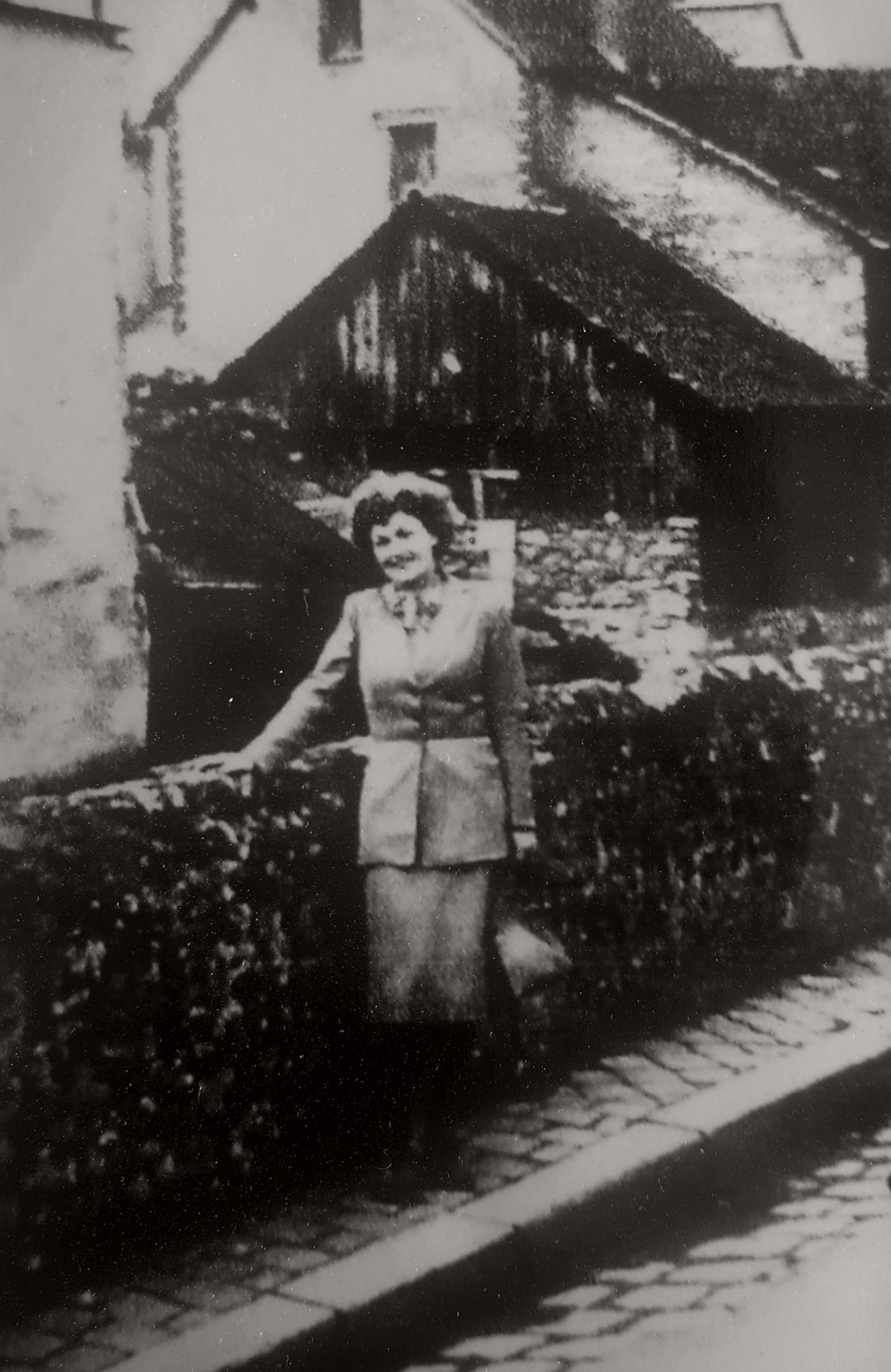
IAREMTCHENKO Catherine (EN)
Catherine Iaremtchenko, née Kachtanoff, was an employee of the Paris branch of the Dienststelle Mühlmann (Mühlmann Service, in charge of procuring works of art for Nazi officials), and at the same time engaging in espionage.

Mülhmann’s secretary, a double agent?
Catherine was the daughter of Nicolas Katchanoff (1874-1950) and Catherine Koudriavtzeff, two Russian emigrés who fled the Russian revolution and arrived in France in the early 1920s. On 17 July 1927, she married her compatriot Nicolas Iaremtchenko (1900-1952), established as an antiques dealer in Paris, 95 rue de Rennes.
The exact activity of Catherine Iaremtchenko during the war was known thanks to the investigation initiated on her behalf by the French government at the Liberation. In December 1945, a report signed “K. Iaremtchenko” was sent to Albert Henraux, president of the Commission de récuperation artistique, by the Cultural Studies section of the Direction Générale des études et recherches (DGER, General Directorate of Studies and Research).1 The document details the purchases of artworks made in France during the Occupation by the services of the Dutch Reichskommissariat, its headquarters in La Haye. The informant indicates that she accepted a post of secretary-interpreter in the Beaux-Arts section of that service beginning in February 1941 in order to spy on and record Nazi transactions. She mentions that among her motivations was that of facilitating French restitutions after the war.
Her report reveals the organization of the Reichskommissariat section for the purchase of artworks, established in Paris in the Majestic hotel and directed from the top by the Austrian Nazi Arthur Seyss-Inquart2 (1892-1946), Gauleiter of Holland. The service notably included Dr Eduard Plietzsch (1886-1961), Franz Kieslinger (1891-1955), Kajetan Mühlmann (1898-1958) and his half-brother, Dr Josef Mühlmann (1886-1972). Catherine Iaremtchenko, forty years old, dubbed “Nicole” and under the latter’s orders, her main function was to assist Mühlmann in his administrative procedures and purchases made in Paris. This privileged position enabled her “to more easily note down each object in detail, as well as the name of the person from whom it was bought,3 both by Kai Mülhmann and other Nazi services.
She mentions being in contact during that period with some of the main figures responsible for looting in France, such as baron Kurt von Behr, head of the ERR, baron von Tieschowitz and Dr Felix Kuetgens – both members of the Kunstschutz.4 Thanks to the numerous relations of Kajetan Mühlmann in the highest spheres of Nazi influence, the activities of the Beaux-Arts section rapidly increased and became known as the Dienstselle Mühlmann (Mühlmann Service).
Catherine Iaremtchenko’s secret action also grew. As of end July 1943 she established links with the Resistance as a private informant. The arrest of her contact on 22 February 1944 interrupted her relation with that counter intelligence network. The lawyer Aur Payen, her accomplice in the Resistance and lawyer at the Paris appeals court, put her in contact with an agent of the Béarn network early March 1944.5
The Libération and with Récupération artistique
Catherine Iaremtchenko says she was obliged to leave Paris on 11 August 1944 with the Mühlmann Service, their headquarters having been transferred to Vienna. She entrusted her notes to Aur Payen and remained in Vienna for two years. When allied troops entered Holland in the Fall of 1944, the Service seemed in disarray and she decided to go into hiding to cease collaborating. However, she was denounced to the Gestapo in January 1945 before being sent to camp Maria-Lanzendorf,1 near Vienna.
She was forced to accept a mission there as interpreter and was assigned to the supervision of foreign workers. During that period, she says she took advantage of her position to destroy any compromising elements concerning French workers. At the end of March, she fled to the Tyrolean Alps, near Salzburg, until the arrival of the American troops, who issued her a residence permit and hired her as an interpreter.2 When in November she informed the 2nd French Bureau in Innsbruck of the important documentation she had collected during and after the war, the information came into the possession of captain Jean Vlug, an agent of the Dutch Artistic Recuperation, who used it to establish the report he signed on 25 December 1945.3
A month later, Catherine Iaremtchenko was finally confirmed in her status as collaborator in the Section des Beaux-Arts and the Direction de la sûreté of the Military Government of the French Occupation Zone (Gouvernement militaire de la zone d’occupation française, GMZFO). She then contacted the Commission de récuperation artistique to propose her aid:
“I would like to enter an official French service that would enable me to continue the work I undertook almost five years ago, to recover the stolen works of art and put my work and the information I possess at the service of France, my adopted country. […] I will of course provide complete information on each object and greatly facilitate the search for works of art, as I am the only person who knows in precise detail the work of Dr. Kai Mühlmann’s service in France.”4
Repatriated to France at the end of the war, she was however accused of violating the external security of the State, but the case was dismissed in July 1947, enabling her to enter the French Réparations-Restitutions services in Vienna. Her linguistic knowledge and relations with several Austrian anti-Nazi figures in municipal and regional posts after the war facilitated recuperation work. Catherine Iaremtchenko died in 1950 in Paris, at the age of 43.
Basic data
Personne / personne


